A Step Back
Though both Castle and Kingdom of Zandia are action games at heart, the latter has a very different approach to how that action plays out. The first game was a fully linear affair, with most of its boards having an encounter with ZZT's creatures, or in some instances guard keys as players made their way through different locations, the evil king's castle, an underground mine, and so forth. These boards built up their way to the boss fights found at the end of each segment.
Kingdom does away with much of this. Its overworld and caves still include their share of creatures, but the numbers are often quite small. Players that aren't chasing high scores (and nothing about the game really strikes me as encouraging that style of play) can frequently ignore enemies entirely as the enemies are either clumped together tightly enough that the player can just go around them, or spread out so thinly such that the player can focus entirely on avoiding a single enemy confident that the others are too far away to have to worry about.
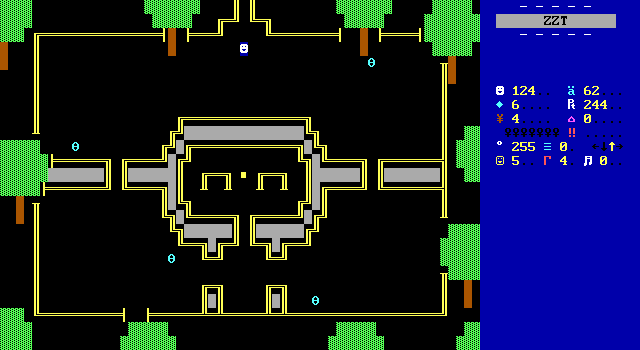
This is a step down to me. The previous game was a solidly designed game whose fights felt meaningful. The boards had more interesting geometry to fight in, and often used keys and doors to demand players engage with it.
Here it's only the boss fights that players really need to concern themselves with. Again, I get the sense that to LaMar, these were the highlight of the game, and to be fair to him, he isn't wrong. Even if the lower-stakes action was comparable to Castle, the artwork really brings the game to the next level, and unlike most oversized ZZT bosses, LaMar's are competently designed.
In addition, the first game had its share of puzzle boards ranging from typical slider puzzles to more complex devices with steering robots or spotting which walls were walls and which were objects. Many of these were quite impressive, providing a new kind of challenge while giving the player a break from worrying about their health and ammo.
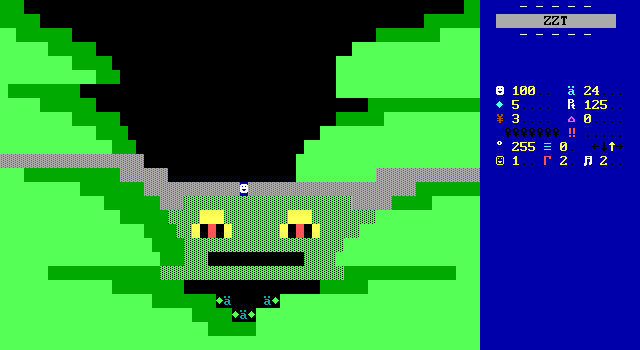
Sadly, Kingdom practically removes puzzles from the equation entirely. If you stretch the definition a bit, you can maybe argue there are a few. Players need to find a way to get the town guard to move away from the gate. A puzzle solved by talking to somebody else on the board which causes the guard to move towards them. A living hill guards some optional treasure if you can correctly answer why you need it, which consists of the truth (to rid the land of evil) and some obviously unhelpful answers ("just because", "to buy a new car"). There's a statue with a key Ralph needs embedded in it ...and a clearly visible button on an otherwise solid rock next to it that destroys the statue. In town a strange "X" on the ground points to buried treasure. Solution: Buy a shovel from the merchant ten feet away.
No sliders, no pipes, no robots, no key mazes, no nothing. I had praised LaMar in first game for having some really well-built puzzles, something new ZZTers can rarely be trusted to do well. Ditching them so thoroughly is the biggest letdown of the game by far. In Ned the Knight puzzles would make a triumphant return, moving beyond those built from ZZT's elements and into the less retro adventure game style of acquiring the correct item to be able to make it past certain obstacles. For Ralph, his struggles are almost exclusively creatures big and small that want to cause him physical harm.
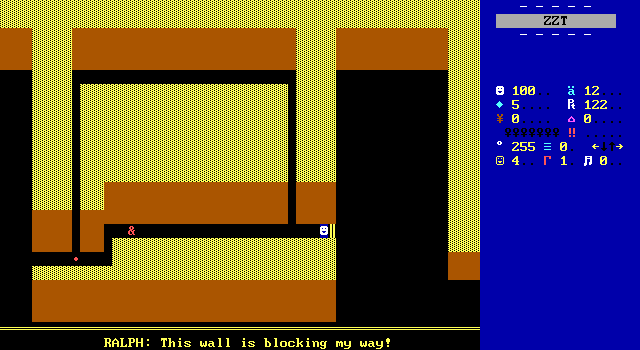
The only time something more involved shows up is the demon with rubber allergies briefly mentioned previously. To get to the demon in the first place, Ralph needs to kick aside Timmy's rubber ball which bounces off a nearby wall. Each time Ralph talks to the demon they reposition themselves, eventually ended up in the path of the ball which can be kicked to defeat them instantly. This is ultimately a very simple puzzle, but not as much of a stretch as the others. It's also early enough in the game that it will get your hopes up for more puzzles with greater complexity later that LaMar never delivers.
Big Boss Little Boss
Where the action is most involved is when Ralph has to face off against numerous bosses on his adventure. Previously, the boss fights of the first game were a fun selling point, as LaMar made sure there was something unique about each opponent not just within Castle, but compared to boss fights you'd see in ZZT in general. The original face-off against Grudeus required tunneling through breakable walls to reach him and then attacking from an angle to avoid the shot being deflected away by ricochets. Megapede added a key collecting aspect to the fight, with the boss being protected by a wall until players could grab all the keys to lower them, making the challenge come more from the swarms of centipede heads rather than the boss themselves. The invisible guardian ...was invisible. Lastly, the evil king himself fought by using a duplicator to produce clones with players having to fight their way to the real king.
All of these felt different from the usual "move and shoot" style seen in most worlds. (Perhaps excluding the invisible guardian, invisible bosses aren't that rare.) It seems like LaMar himself a tough act to follow, however in practice while the boss battles in the previous game were certainly unique, they weren't great. The same breakables that made Grudeus difficult to reach also blocked his own shots from reaching the player, making what should have been an intense battle rather toothless. Megapede boiled down to just a big pile of monsters. The invisible guardian is yet another invisible enemy that's not enjoyable to fight, saved by having a small enough arena that he wasn't too hard to track down. Even the king himself suffered from potential soft-locks if the keys dropped by clones piled up in certain spots.
Kingdom hasn't clicked with me the way Castle did, but this is an area where improvements can definitely be made. Here, LaMar doesn't disappoint, though he does trade the previous issues for some new ones.
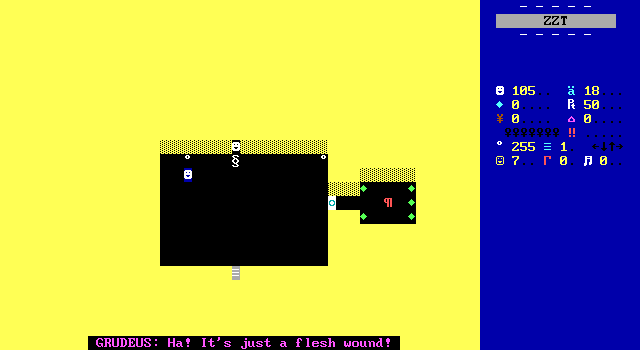
Bosses in Kingdom come in two flavors, your traditional player vs object, and your more visually impressive player vs stationary art. LaMar's use of the player vs object style works itself into the world rather nicely. Right away players will get to have their first encounter with the still-cursed Grudeus, so early in fact that they won't have had anything to fight prior. Grudeus is a pushover, and deliberately so, being portrayed as a vengeful enemy who can't get over his defeat in the previous adventure. Ralph had no trouble defeating him before, so why should he now? This is reflected in just how basic an attack pattern Grudeus has been given here, shooting in every merely three directions, un-moving from his spot with his back against the wall so as to keep the real mayor captive. Leave him alone for too long and he'll dare to throw a star, but realistically players get to wallop on him without a care.
Getting to fight a tiny boss first sets player's expectations that these kind of fights are what they'll be in for, just as they were in the previous game, so later on when LaMar shifts gears and embraces his talents with art and animation, it's all the more impressive to go up against enemies that take up large portions of the board. For added surprise, prior to the first oversized enemy, players will have run into the well serpent and living hill, two large characters that appear merely as art, incorrectly teaching players that all giants they'll encounter will be gentle.
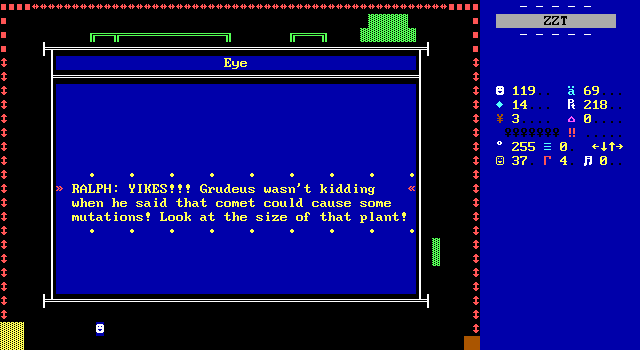
Ralph's love of talking to the player by talking to himself comes into play, hammering in the idea that players are supposed to be shocked at the scale of the first of several mutated creatures.
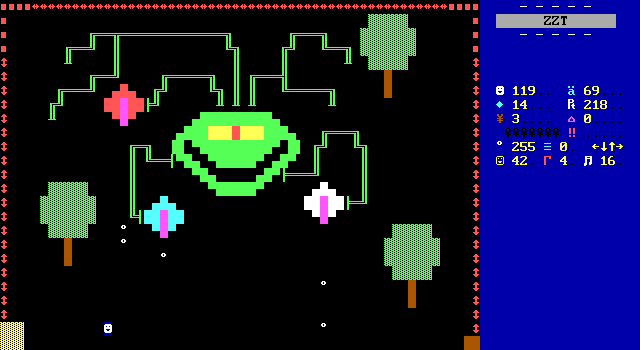
They do look great of course, making them easily the best part of the game even. Yet the giant boss monster isn't that rare in this era of ZZT. What is rare, is making these battles feel worthwhile. All too often players need to find the right tile where the monster is vulnerable, and merely hold shift and the appropriate direction until they win. To counteract this, authors tend to go overboard with stars (looking at you Doomsday 2) forcing players to keep moving, usually making it impossible to ever be able to land a shot in the process.
LaMar says no thanks to that, and instead strives to find alternatives that provide a better challenge when fighting enemies that can't move. ...Albeit, not here with the plant.
The plant gets to be much like Grudeus, an introduction to a type of combat that's deliberately a pushover. The center of each of the plant's flowers shoot downward at a relaxed pace, giving players plenty of opportunity to slip in between two of them, shoot a few bullets to overcome any of the plants, and strike their target. A single bullet getting through is all it takes.
It doesn't amount to much on paper, so LaMar tries to spruce things up a bit. Unlike the usual big boss with multiple targets, destroying one does more than just triggers a #die command. The flowers "pop" instead! Most of them disappearing in an instant, leaving just the four "corners" of the inherently crude ZZT circle in place before they too vanish together. This is also accompanied by the plant's eyeball flashing blue as well. It does a lot to make the enemy feel like a large creature and not just some art with a few objects thrown in.
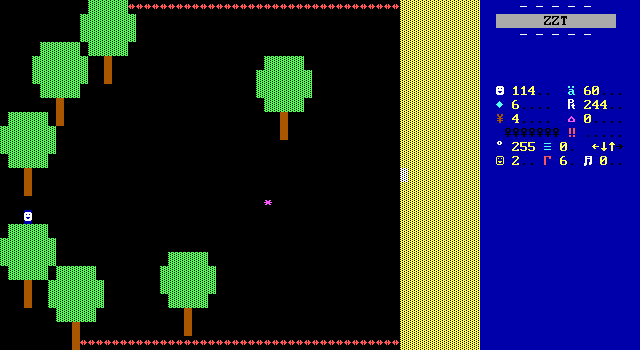
The next surprise for players is meeting with the comet's traveler Raigiss. The board is framed to look like it's the next battle. Barriers keep the player from progressing, and the main walkable area is kept almost devoid of obstacles to provide a clean environment to fight in.
Ralph doesn't fight just yet. Raigiss is still in a weakened form, appearing as a diminutive little blob that's currently more bark than bite. I love how the game presents actual threats in giant form, while making the standard single object enemy come off as weak.
The fight against Grudeus made him a pushover, but here Ralph doesn't even need to fire a shot to send Raigiss running off while swearing that next time it will be different. The alien puts himself in a unique position where to Ralph and the player controlling him, he comes off almost as a joke, but to the ever-knowledgeable Grudeus the threat is real. Rather than try to fight Ralph himself, Raigiss summons Grudeus to do his bidding, having used his hypnotic powers to gain control over Grudeus's mind.
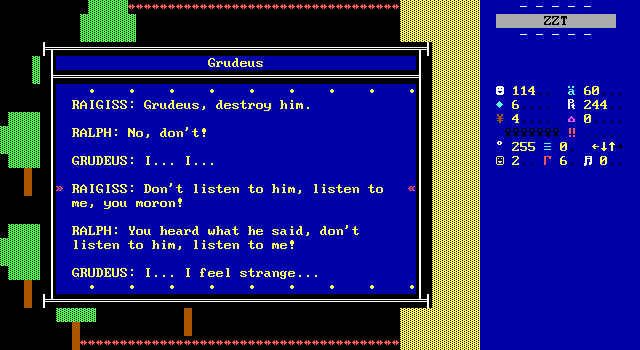
Rather than fight Grudeus again and take the traditional solution of breaking a form of mind control (beating the controlled person's ass senseless), Ralph is able to free Grudeus once more with some Looney Tunes level deceit.
As long the comet exists though, Raigiss will continue to grow in power. Grudeus sets Ralph off on a new quest for some keys to access a magical crystal whose powers can be used to destroy it. This takes players across a more open area where a few more boss fights await to claim the keys.
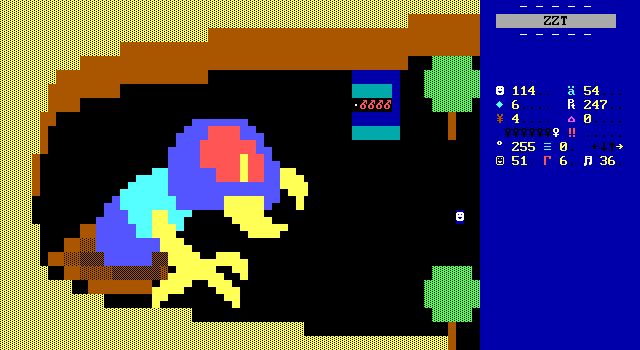
Which is where my favorite boss of the game makes his appearance. As with the plant, players are given no build-up to the encounter, simply choosing a direction to head and being greeted with some excellent artwork. The giant centipede is hands down the best drawn piece of art in the game. The perspective work on the mandibles is really something else here, adding a third dimension to the design that so few others would have been able to pull off.
The centipede ain't just a looker either. The fight also plays the best of all the fights in the game. One look at the bombs behind the duplicator make it clear how players are supposed to fight here, but the screenshot above doesn't reveal how the centipede fights back. And of course good feedback is given to the player with each bomb, with the pede's eye flashing purple and some SCREEs of agony for good measure.
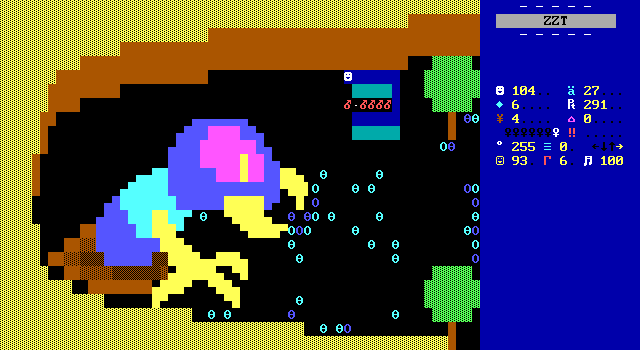
His mouth is used as a source to spawn centipedes, which if created at a steady rate allows them to properly connect to previous segments and form a full centipede enemy, a step above Megapede in Castle whose spawn were solely single tile heads.
As the centipede is bombed, the enemies are spawned in in greater and greater number. At first, the fight seemed like it was going to be just as easy as the plant, with the growing centipede enemies being cool to watch despite creating little danger. After a few bombs, the fight enters a second phase and the number of centipedes rapidly gets out of hand.
While their explosions undoubtedly will take out more than a few creatures, the bombs duplicate fairly slowly. Players will find themselves having to take a moment to clear a path for themselves with their bullets. Rather than just waiting for the next bomb, the fight requires you to actively move around. At first it's just to dodge lone enemies that wander close enough to become a threat, but later it becomes necessary to keep from being completely swarmed.
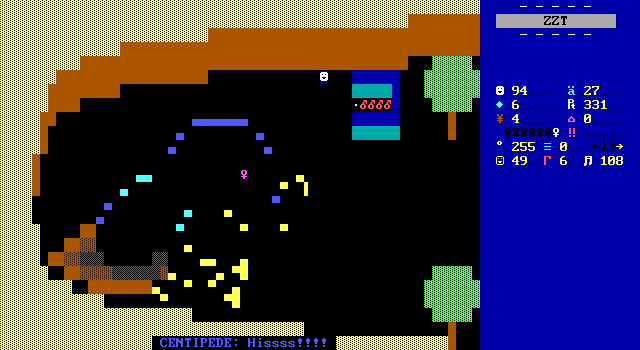
This really combines to make a great fight, not just for Zandia, but ZZT worlds as a whole. The enemy looks cool as heck, distances itself from the run-and-gun fights players have seen countless times before, and offers a challenge without feeling unfair. I really have no complaints here. If every boss battle in ZZT was half as enjoyable as this, the overall quality of them would improve dramatically.
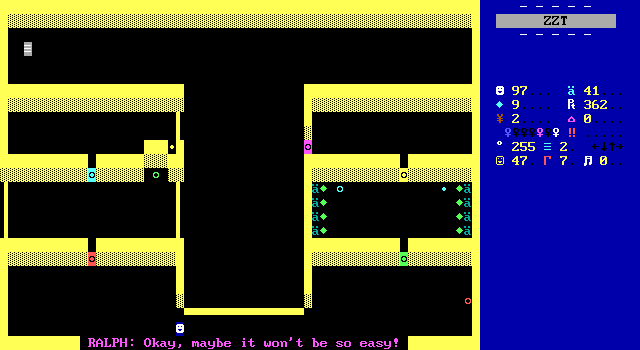
Not every actual fight is with an oversized foe. The search for keys includes callback to Castle of Zandia with players revisiting the previous game's jungle from a different angle. This culminates with an excursion into the crumbled temple ruins where Ralph defeated the evil king in his first adventure, recreating the extremely yellow style and including a humorous section where a straightforward path to the next room is repeatedly delayed as Ralph sets off traps that shift the room's walls around.
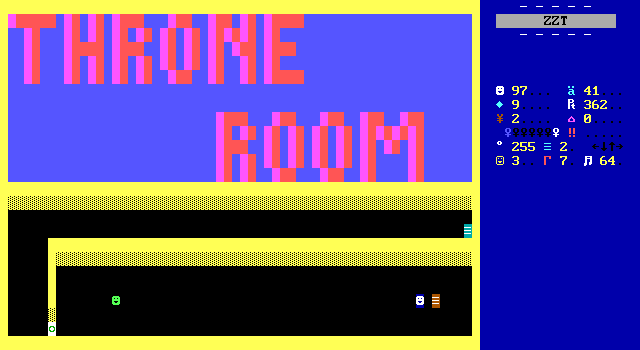
Or so he thought! As at the end of the temple upon once again entering the throne room (which has kept its great lettering from last time), who should be waiting but the evil king himself?
Seems like Ralph only beat up a clone last time, which isn't all that surprising given that the fight was about fighting dozens of evil king clones. This one assures Ralph that he's the real deal and that he has no intention of fighting fairly.
That just means that he also spawns centipedes as he moves and shoots. These ones are the single head style seen previously with Megapede which in a room that's a bit cramped vertically means a lot of congestion. He's a lot easier than his previous form which ran into the risk of soft-locking the player since each clone dropped a key and keys are effectively walls to players if they already have one of that color.
Here the king is a lot less interesting than the other enemies, but it makes for a cute callback to the previous game as well as helping players build up an image of Zandia in their mind, offering a way to connect the two games geographically with this shared location.
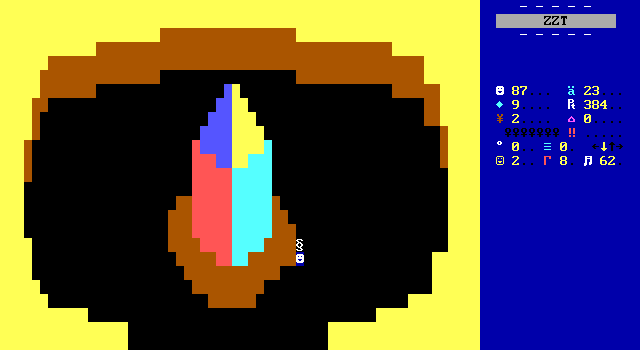
The king and the centipede can be fought in any order, each one dropping one of the keys to the magic crystal needed to destroy Raigiss's comet (with the third provided by Grudeus). Of course, it's never so easy. The spell does as it should, with some intense flashing effects as it works its magic resulting in the comet vanishing, but Raigiss is prepared. He's already taken a piece of the comet for himself, thus ensuring his survival.
With the easy way out of this mess no longer an option, Ralph instead has to do the job himself, chasing down Raigiss for the final confrontation. Raigiss lures the player to a purple arena with plenty of space for the two to move around as the duel commences. He's still not fully powered up, and players might think that he's already on the verge of defeat with little more than fraction of the comet left to sustain him, but it's not so simple as Raigiss more than one form that needs to be defeated to get rid of him for good.
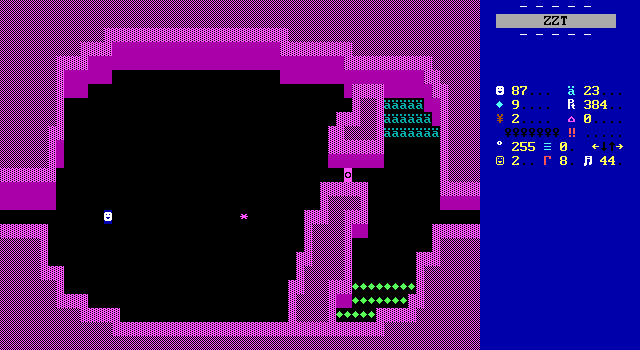
The first is still very much a pushover you'd expect from a small-sized enemy. His code is a lengthy loop of moving and shooting. He primarily moves towards the player, sometimes backing off instead. His bullets always aim for the player save for a short break where he stands still and fires a spiral of bullets in all directions twice. This is typical stuff, which shouldn't be all that difficult to begin with. It's made even easier though as at a few phases he'll pause briefly, including one part where he waits, throws a single star, and then waits again. Finding an opening is easy, something appreciated as my ammo was actually rather low for this first form. He's honestly rather well balanced for players that can't get away with spamming bullets until something hits.
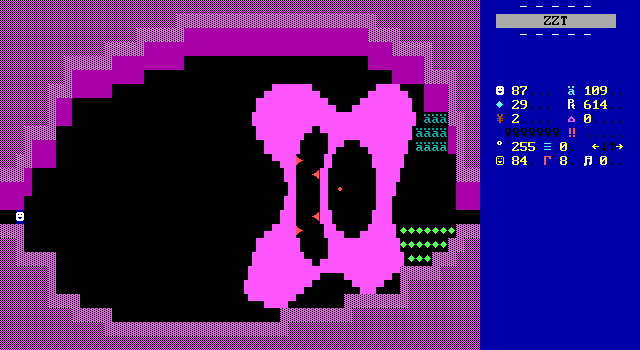
Let's be real though, there was no way it wasn't going to end with anything other than an oversized boss. The blob got big, so big that he had to be rotated on his side like this to fit comfortably on the board. He could have been squeezed in right-side-up, though only five tiles of vertical space would remain, and that's before considering the border.
Rotational issues aside, this is another highlight of LaMar's boss designs. It appears to be the standard with various bits of Raigiss shooting off bullets regardless of whether or not Ralph is anywhere near them. Notably, there's no obvious weak point here. The eye and fangs are likely candidates, but well insulated from any of the player's attacks. Luckily, after a few seconds of dodging and guessing via blind fire, Grudeus shows up yet again to offer the solution. Shoot the pieces the are shooting bullets, then shoot the "small spinning blobs", then the fangs, then the eye. I'm not too huge a fan of everything just being spelled out for the player like this, though Grudeus leaves afterwards so it's important to pay attention as you'll only see the solution once.
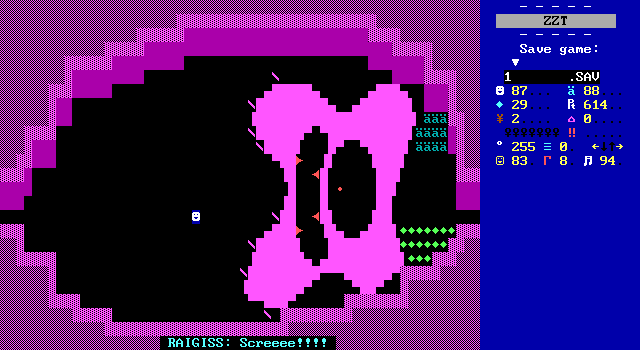
The big surprise comes from the "small spinning blobs" showing up. The half block characters make it clear where Raigiss's components are objects, so the sudden appearance of these blobs was a genuine surprise! The solid tiles on the outside are also objects, and they near-seamlessly replace their previous location when it's their turn to become active. They basically act like stars that remain one color and spin more slowly. It's a great visual effect honestly, and looks very unnerving in motion to see these tiles just slowly rotate towards you.
Following Grudeus instructions, Ralph slowly carves away at the blob, going for the fangs, and then the eye. Just when it seems to be over, Raigiss reveals that he has one more form to go. I suppose that explains the ammo and gems that can't be reached until the first form is finished.
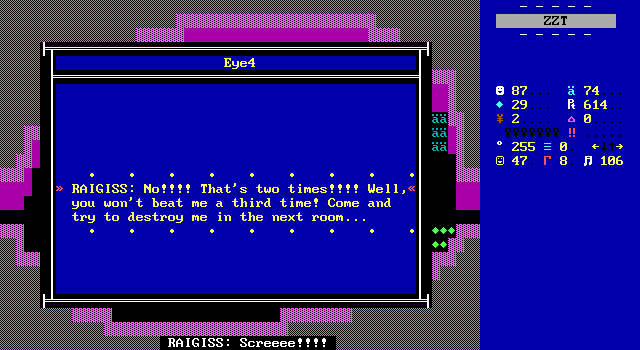
Come to the next room if you want an ass kicking.
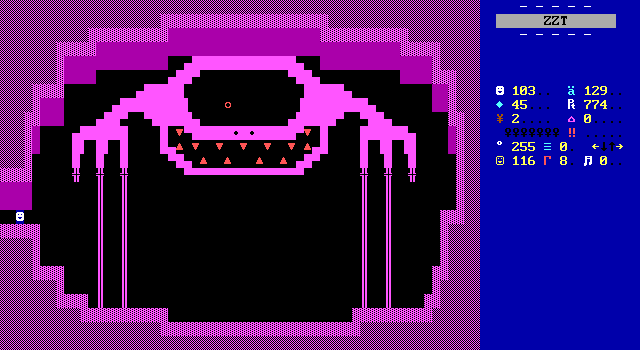
The last phase is entirely left up to Ralph. Raigiss still has a few new tricks to try and get rid of Ralph for good. His new blinkwall fingers keep players more centered in the room to stay out of their way, putting him right where he wants him as his armpits(?) throw stars at a tolerably slow rate.
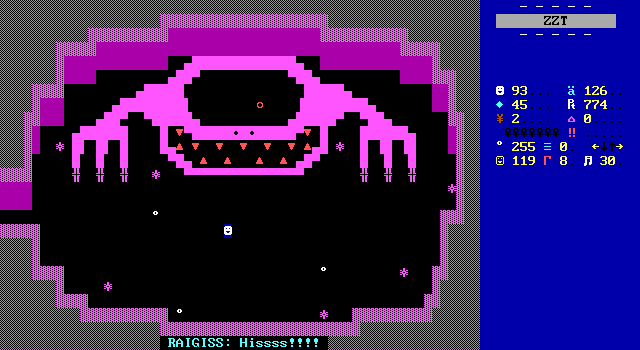
This form seems invincible, until players witness the reaction to shooting the last new feature added to this phase: some tiny purple bubbles that shoot in all directions and pop when defeated. From here Raigiss begins to collapse.
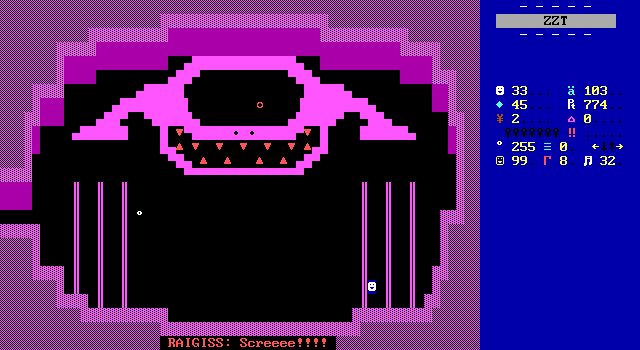
The hands are the first to go, which depending on exactly when they do may mean players have these recesses to try and hide in during the next phase. More bubbles spawn from where Raigiss's hands were, this time moving much faster and shooting more frequently. If you're not careful both columns between the blinkwalls can get filled with shots, making it quite risky to try to hide rather than fighting out in the open.
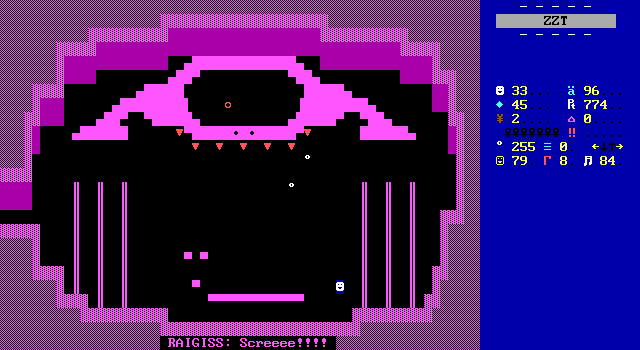
His jaw is next, crumbling to the ground and shattering in one of the game's more unexpected animations. The goofy grin that remains begins its own assault like the teeth in the previous form. Here the boss's lack of mobility means that the fight is pretty much over. Ralph's continued assault is just to make the outcome official.
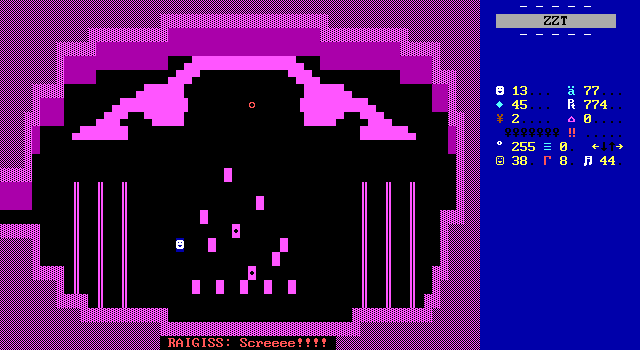
Lastly is the eye. You almost feel bad for Raigiss at this point.
A few more shots and Raigiss is no more. A path to the next room opens for the game to conclude, with nothing of note happening after the final blow, which left me wondering if there was going to be yet another form still.
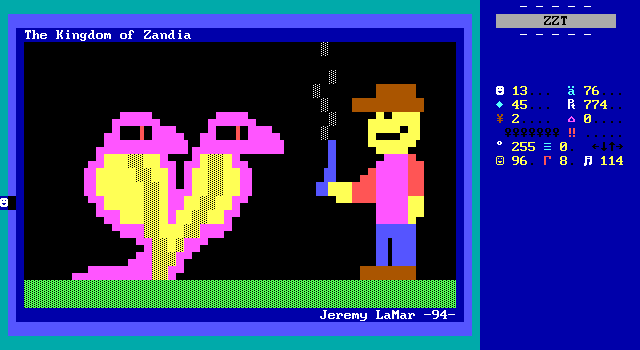
The reward for players who see the game to its end is this incredible drawing of Grudeus and Ralph. I kind of forgot Grudeus has two heads, and I'm loving his purple and yellow colors.
Ralph is just as great to see. The most chill man imaginable and still holding a smoking gun. So many ZZT worlds never try to depict what the player or other characters actually look like that it's actually a pretty smart idea to actually treat it as a reveal in the ending.
It's not just the artwork. The ending itself is rather sweet too. Grudeus and Ralph celebrate a job well down, with Grudeus expecting this to be the end of their time together. While cursed he was a menace to the kingdom, and now that this mess has been dealt with, he's ready to slither off to his fortress where he'll be alone once more.
Ralph will have none of it. He's confident the villagers will forgive Grudeus once they learn of the curse, and is more than willing to defend him. Grudeus is so excited at the prospect of being welcomed back to society, that he immediately runs off to town, challenging Ralph to see who can get there first.
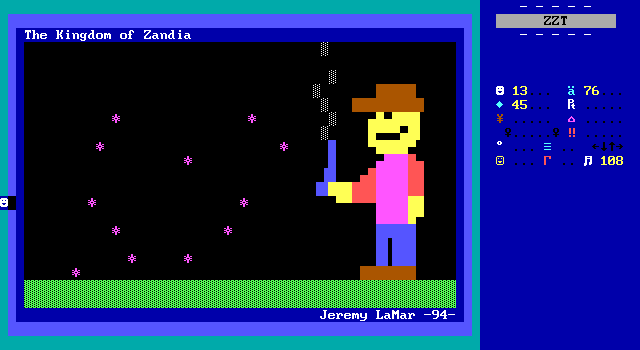
Then, for one final touch of visual flair, Grudeus flashes and disappears in the blink of an eye, leaving a little dusty outline of his form where he once was. It's incredibly cartoony, and I have to admit that after all the animations seen by this final screen, I still wasn't expecting the art to move like this.
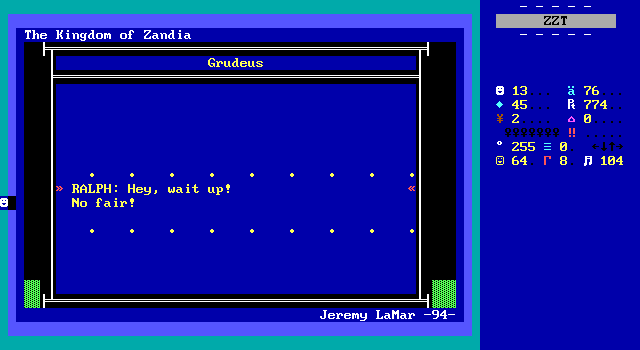
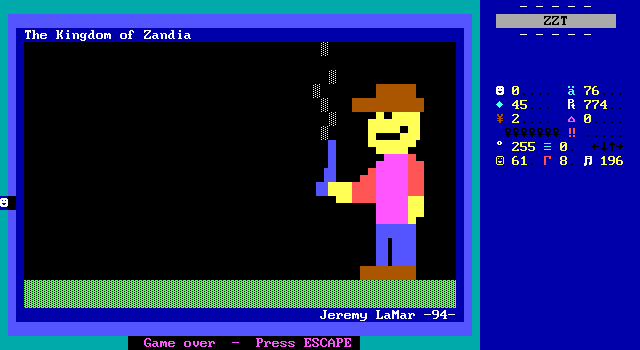
Final Thoughts
It's still quite a lot of fun.
The first Zandia has its share of things to be proud of that the sequel lacks. I was let down by the lack of puzzles. The world, while physically bigger, felt smaller with the lack of NPCs and sparse placement of enemies that weren't bosses. Despite taking place across an entire kingdom, the areas explored didn't feel all that different, contrasted to the first game's variety of locations. I wasn't expecting that when all was said and done for me to have preferred the original Castle over Kingdom.
But at the same time, it's clear that the reasons why I feel that way are very much personal preference. The sequel has plenty to love all the same. It is a fantastic looking game thanks to its numerous boss characters, as well as some solid artwork outside them including the ruins statue and the magic crystal. Graphics, of course, aren't everything, yet ZZT's limitations make it so that when someone finds a way to impress visually, especially without access to Super Tool Kit colors, it's hard to not let that impact your perception of the experience.
LaMar is on to something here, creating a fantastic world with weird characters, unlikely allies, and smart ways to make the action feel relevant to the story rather than just an obstacle in the way of the next text dump. The leap from this to Ned the Knight is still a pretty significant jump, yet looking at this, it doesn't seem impossible. I mean, he managed to make huge boss fights that felt varied and fun, something very few can boast.
Kingdom of Zandia is still light-hearted, silly, and straight up fun to play. It's a game that feels like it began as a story in LaMar's head that was able to be turned into something that anyone could experience, and still would want to almost thirty years later. While it deviates from the first in ways that might make you wish it hadn't, there's no rationale to claim that shift was a mistake rather than a well thought out decision that resulted in an impressive second outing with ZZT. If you enjoyed the first game, even if the second isn't quite what you would have hoped for, you owe it to yourself to try out the sequel as well.
If you're just jumping around ZZT worlds with little care for the ordering, Kingdom of Zandia holds up quite well on its own. The references to the original are all quickly explained and hardly that important to understand. It builds on the groundwork from before, and takes things in a direction that's easy to appreciate.
The Zandia series has long since been overshadowed by LaMar's biggest successes with Ned the Knight for ZZT and MegaZeux's Bernard the Bard. Compared to their significantly more complex games, it's easy to see both Zandias as less interesting games. In both cases though, I left quite happy with what I had just spent my time on. Zandia stopped here, having served its purpose of letting LaMar hone his abilities, but it's still very much worth looking back on for yourself. Not all games need to be masterpieces to have something to offer.

.png)
